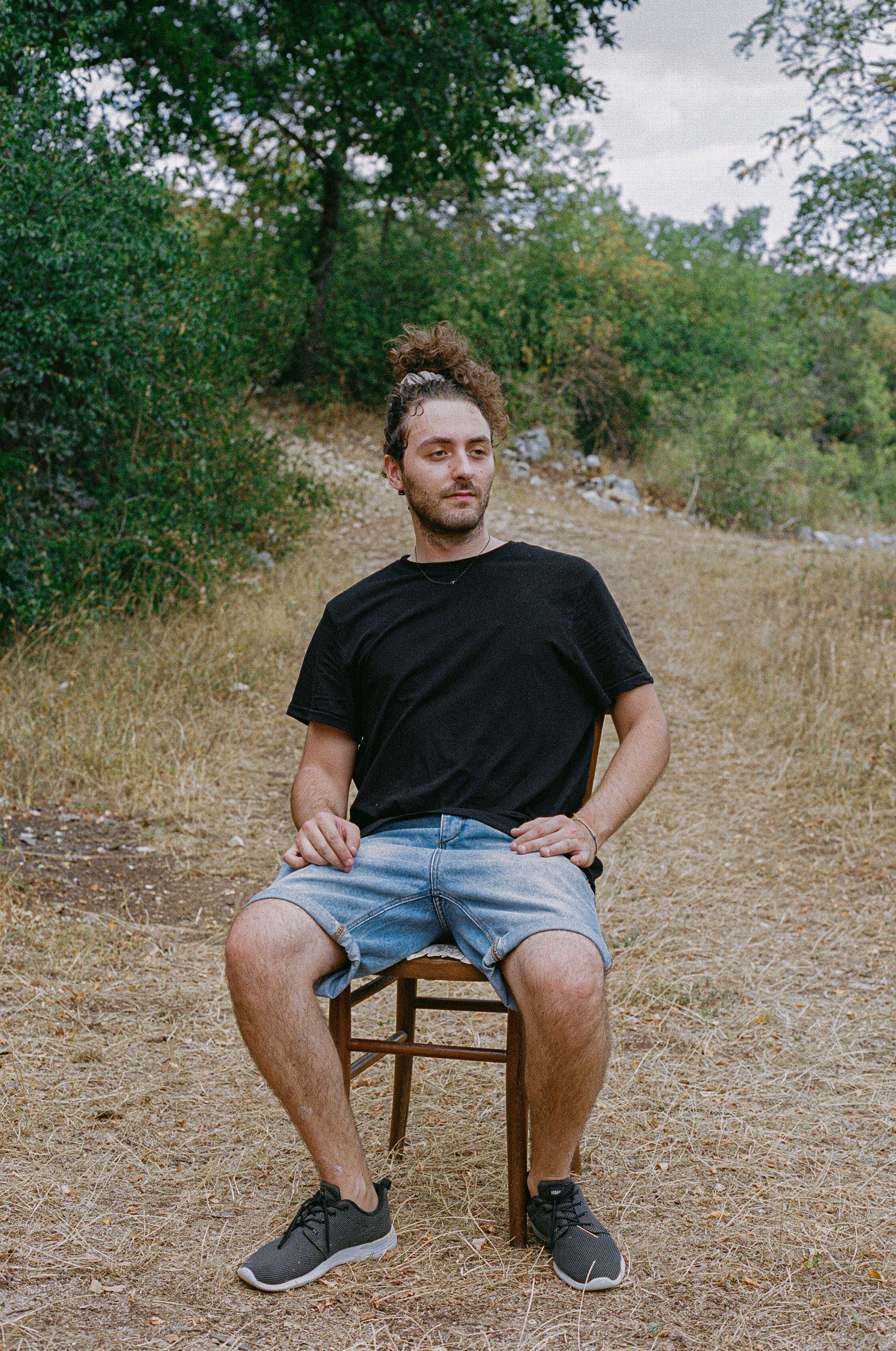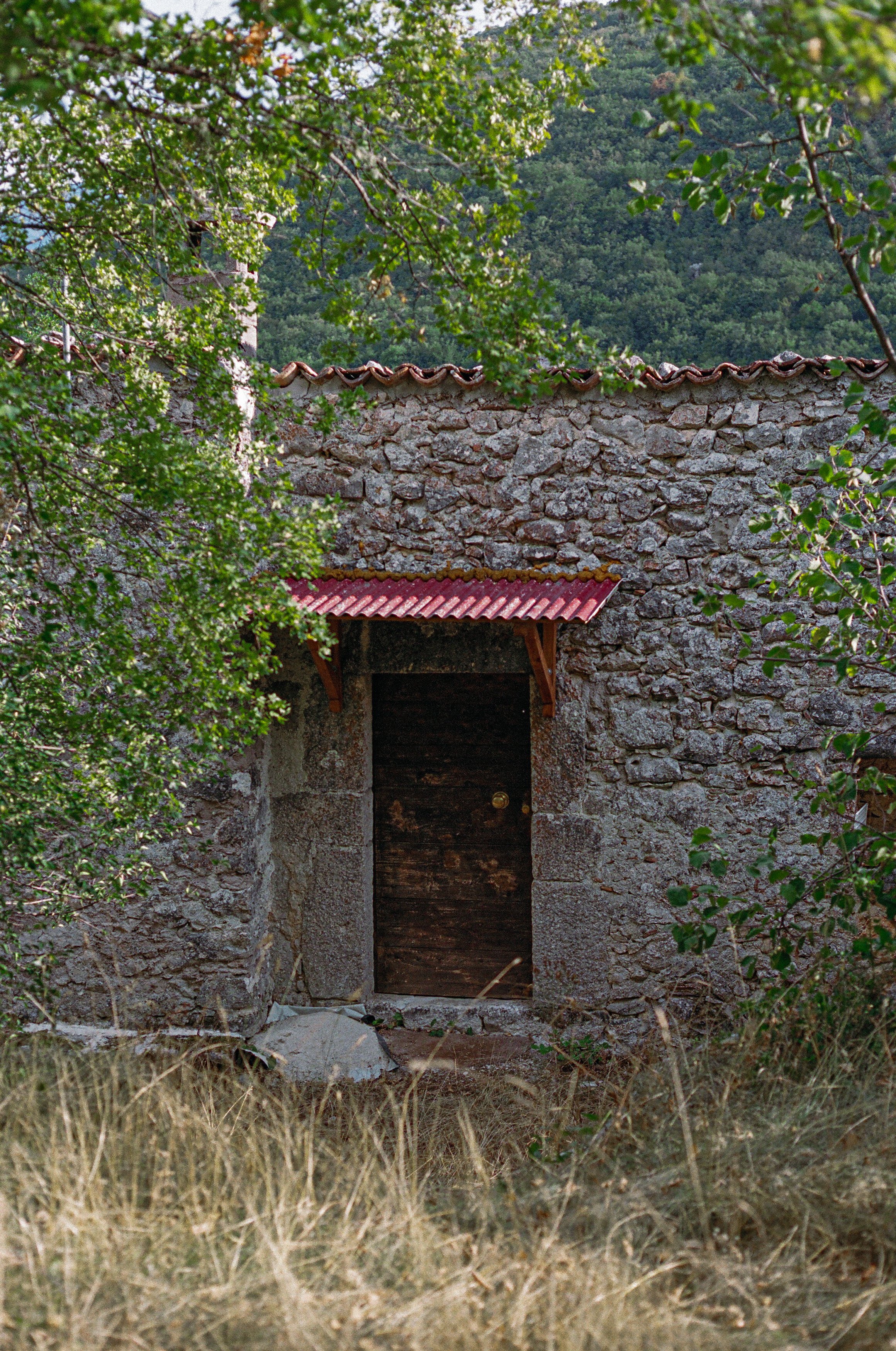Ferragosto in L’Aquila
It was a full-on Anthony Bourdain moment. Some real local merda.
I had been traveling throughout Italy for a month, or rather, drinking my way, I should say—it would take twenty hands to count the afternoon spritzes. I had taken up a habit of smoking (an ashtray on every table can do that to you), and was eating my fill along the way, at trattorias and locals’ homes alike. But as it turns out, I had to be driven up into the Apennine Mountains of Abruzzo, up an hour of winding dirt roads, in a car with no air conditioning, sitting three across in the backseat, up to a little stone house in Fontecchio, disconnected from the rest of the world. All of this, in an effort to taste a dish whose image and likeness I now want tattooed across my stomach. It is known to the Abruzzese people as arrosticini.
There were eight of us—everyone an Italian except for my American friend, Rove, and I—and we had all just met at the bus station in L’Aquila. Rove and I were invited just a week or two prior.
“Come to L’Aquila to celebrate Ferragosto in the mountains with my friends,” Elisa said.
“Sure,” we said.
We had no expectations. I hadn’t even bothered to look L’Aquila up on the map. It was that kind of a trip—we booked things last minute, toured around with people we had met along the way, and walked where the wind blew us.
Arriving finally in Fontecchio, we each climbed out of our cars to unload box after box of food and drink into a small stone house on a hill with no electricity, all the while pouring water through our hair and tying sopping shirts around our heads to stave off the heat (along with the lack of electricity, there was also no shower). We managed with smiles, however, for we were in paradise and about to feast and drink away the sun.
As we all began cutting tomatoes, tossing salad, and slicing bread, Leonardo Furore (a composer with long curls, as anyone might expect) began unloading a strange red, metal DIY-looking grill and setting it up just outside the window.
“It’s called a furnacella,” Leonardo told me.
Something others may call a spiedini grill. It’s essentially what looks to be a long, rectangular, canal-shaped box without a lid, standing on four skinny legs. He set the grill upright and filled it with coal and bits of fire-starter and wood. He lit the flame and walked away with a huge grin, for he knew better than any what was about to come.
Leo had grown up in L’Aquila (along with most of our group) and was accustomed to the gravel mountain roads of Fontecchio, and to the small stone house built there by his grandfather more than a half-century before he was born. As I gawked at the furnacella, Leo walked over to retrieve a square white cardboard box, something roughly the size of a basketball. He opened the lid and untwined a handful of clear, thick plastic to reveal two hundred wooden skewers sticking into the air, all of which were tightly packed together, each skewer thrusting through neatly packed bite-sized cubes of castrated sheep’s meat.
Leo took a handful of skewers out of the box for show, pointing out how the cubes of meat were alternated by the fatty chunks of sheep so that every bite has a bit of salty muscle and a bit of the soft buttery gristle—the alternating of which makes the skewer, or more correctly, the arrosticino. It is an art in itself.
Leo placed one arrosticino after another onto the grill, each about a quarter-inch apart from one another. The wooden skewers themselves were a typical twelve inches long, with the five inches of sheep’s meat centered at the middle of each skewer—the sheep’s meat itself being cubed into individual one-centimeter cubes. The key to cooking arrosticini perfectly is in the use of the furnacella itself: the sheep’s meat is placed in the middle in such a way as to stay within the confines of the walls of the furnacella, directly over the coals and the flame, while the ends of each skewer stick over the edges of the grill. This allows you to grab hold of each arrosticino and rotate the meat while also waiting for the wood of the skewers themselves to brown, and then blacken, indicating that the sheep’s meat is cooked through.
After the furnacella was full of bright red skewers, Leo grabbed hold of a bottle of red wine, then a bottle of olive oil. He poured equal parts of each into a small bowl and set it beside the grill at the ready. Then, the rotating began.
Leo moved down the line from the right over to the left, delicately but swiftly turning over every single arrosticino. It wasn’t long before he then grabbed onto a large sprig of rosemary and dipped it directly into the wine and oil mixture, infusing the three together—no pepper of any kind, and no salt (yet). He held the bowl and the rosemary spring over the furnacella and began to lovingly slap the meat with the drenched sprig. The smoke of the grill billowed up around him, engulfing him in the spoils of his craft.
Once the arrosticini had been seasoned, Leo set the bowl and the sprig aside and continued his work at turning the skewers, being sure every surface was torched by flame, waiting for the skewers to turn from brown into black. From the moment the first skewer was laid over the flame, he never once stepped away.
In Italy, Ferragosto is a holiday in mid-August, known formally to Catholics as the Feast of the Assumption of Mary, taking place each year on August 15th. But Ferragosto is an excuse for everyone in Italy, young or old, to flee the city-centers and hide away in the woods or under umbrellas at lidos along the coastline. We see a similar phenomenon in New York City, when the affluent vacate their penthouses amidst the heat of August, in search of green pastures and white beaches, reappearing after Labor Day. But on August 15th, the feast of the assumption is merely just that: a day of feasting, one in which the eating commences midday until every last one of the group has dropped off into a deep and endless slumber.
Keeping with tradition, we poured around pints of Best Bräu Pilsener into little plastic cups, opened bottles of Montepulciano, and, with like most Italians I had met in their twenties, we rolled cigarette after cigarette after cigarette, and danced happily in the dirt.
At one moment during the dancing, Leo disappeared into the house only to emerge again with an array of beautifully repurposed wine bottles, each filled with a different color liquid. “These are from my family,” he said to me, “We have been making these for centuries.” He handed me the first, a bottle of liqueur with a reddish brown hue which tasted of port wine—sweet and deliciously alcoholic underneath. It was called nocino, which is made from unripe black walnuts that are green at the time of distillation, flavored lightly with spices such as clove or cinnamon.
Then he handed me the second, which was a deep yellow. “Genziana,” he told me, “from the gentian root, which,” he smiled to himself, “is illegal, but.” He went on to tell me how his grandfather had gone up into the mountains, where the gentian root grows, and had harvested the root himself. He did so, Leo told me, in a way that kept the root alive, very carefully and respectfully to the land and to the plant itself. His grandfather hiked back down the mountain, and brought the root back to the family, who has ever since made genziana from his spoils. The genziana itself was strong and bitter and tasted of licorice. “Like a sambuca,” I said, ignorantly, but it was true. It was a rather incredible digestive. Perhaps the most intensely herbal drink I had ever tasted, smoother with every sip.
And then it happened, the moment my tongue was graced with the real taste of meat.
Leo left me to swim in genziana as he grabbed hold of a large white bowl in one hand, and with his other pulled one handful of arrosticini after another off of the grill, placing them haphazardly inside the bowl, skewers sticking up for ease of reach. With all of the arrosticini in the bowl, he pinched a handful of salt and dusted the meat with a mouthwatering snow. The arrosticini was ready for us fiends.
It was what I had wished for every steak that I had ever had tasted like. It was what I had wished the bistecca alla fiorentina in Florence had tasted like earlier that week—a Tuscan dish as old as the city of Florence itself, consisting of a one to two kilograms of aged sirloin, cooked over charcoal and turned only once. In other words, much like the bistecca alla fiorentina was supposed to be, the arrosticini was in actuality what I had imagined meat to have tasted like when, fresh off the bone, the Homo erectus had first roasted a kill over an open fire. Looking back, all I can truly remember of that singular moment when I had my very first mouthful of arrosticini, was a clear wide smile to my friend Rove, followed by a bright laugh to everyone around. In the moment, I don’t think anything could have made me any happier than when I proceeded to look back over to Leo, mouth full of sheep, and watch him instantaneously go back into that sacred white box, ready to load up the furnacella for the second of many rounds of arrosticini.
Chad is currently on the road looking for his next meal and with it his next story. Follow him on Instagram: @knuth.cd or email him at: knuth.cdgo@gmail.com






